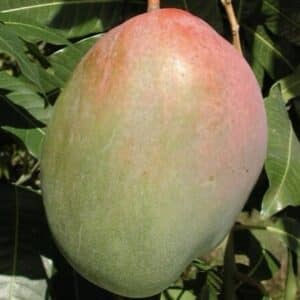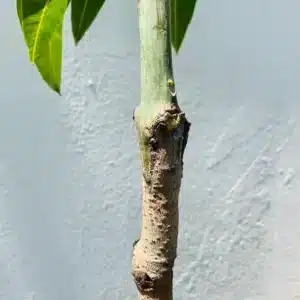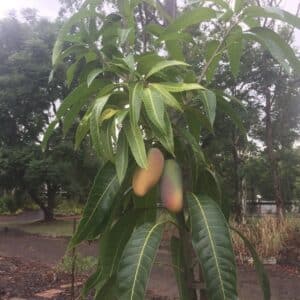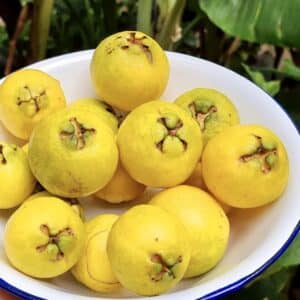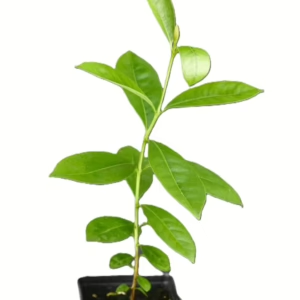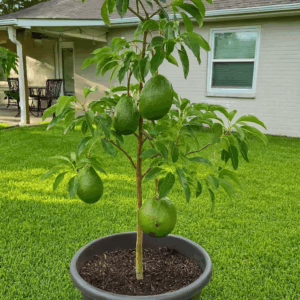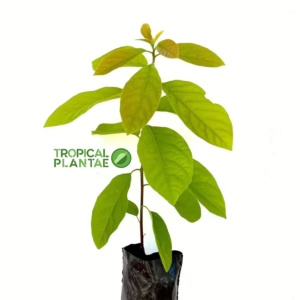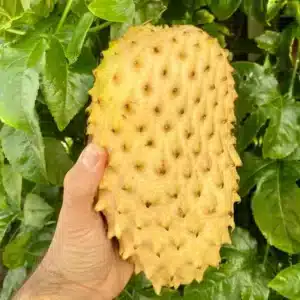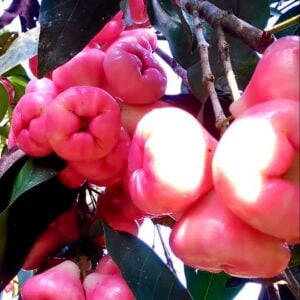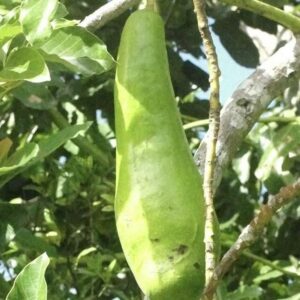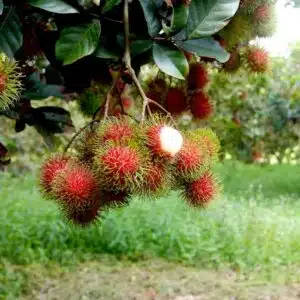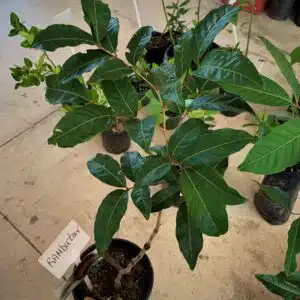Grafted Mango Keitt (mangifera) live fruit tree 3’-4’ feet tall
The grafted Keitt mango tree is a premium tropical fruit tree known for its large, sweet, and juicy mangoes with a nearly fiberless texture. Originally developed in Florida, the Keitt mango is highly valued for its extended fruiting season, late harvest, and excellent shelf life. Grafted Keitt mango trees offer early fruiting, consistent quality, and a high-yield harvest, making them an excellent choice for home gardens, orchards, and tropical landscapes.
Big Grafted Mango mahachanok (mangifera) live fruit tree 3’-4’ feet tall
The grafted Mahachanok mango tree is a premium tropical fruit variety prized for its unique elongated shape, vibrant coloration, exceptional flavor, and reliable productivity. Originating in Thailand, Mahachanok is also known as the “Miracle Mango” due to its superb eating quality and consistent performance in both home gardens and small orchards. Grafting ensures the tree produces identical fruit to its parent variety and begins bearing fruit much earlier than seed-grown trees, often within 2 to 4 years.
Yellow Strawberry Guava tropical fruit tree (Psidium littorale var. lucidum) 1’-2′ feet
Yellow Strawberry Guava, also known as Psidium littorale var. lucidum, is a small, evergreen tree or shrub that typically grows to a height of 10 to 20 feet. It has a spreading, bushy habit with smooth, gray-brown bark and dense, dark green, glossy leaves that are oval to elliptical in shape, giving the tree a lush appearance.
The fruit of the Strawberry Yellow Guava is small, round to oval-shaped, and usually measures about 1 to 2 inches in diameter. The skin is smooth and thin, turning from green to a bright yellow when ripe. The flesh inside is pale yellow to pink, juicy, and aromatic, containing numerous small, edible seeds.
Grafted Mango Julie (mangifera indica) live fruit tree 3′-4 feet’
The Grafted Mango Tree, specifically the Julie variety, is a delightful addition to any garden or landscape. This meticulously grafted tree stands at a convenient height of 3 feet, making it a versatile choice for both small and large spaces. The Julie mango variety, celebrated for its exquisite flavor, is often hailed as the "Caribbean's best mango." It offers a sweet and aromatic taste with hints of citrus and spice, making it a favorite among mango enthusiasts and a must-have addition to your garden.
An interesting fact about Julie mangoes, the variety featured in this grafted mango tree, is that they are often referred to as the "king of mangoes" in the Caribbean. The nickname "Julie" is believed to have originated from the French word "joli," which means pretty or attractive. It perfectly captures the essence of these mangoes, known for their petite size and stunningly delicious flavor. Julie mangoes have also been called "the butter of mangoes" due to their smooth, creamy texture and rich, sweet taste, making them a prized delicacy in the tropical regions where they are grown.
AVOCADO MARCUS PUMPKIN FRUIT TREE (Persea americana)
The Marcus Pumpkin avocado tree is a unique and impressive variety that gives you the chance to plant something today that will positively impact your surroundings, your home, and your long-term experience with nature. Bringing this tree into your garden means you’re choosing a future filled with growth, beauty, and rewarding harvests. Even from the moment you plant it, tomorrow already feels different. You wake up knowing you made a decision that brings life, movement, and potential into your outdoor space.
Golden Yellow Soursop (Annona muricata ) live fruit tree 1’-2’ feet tall
Looking for a beautiful and delicious addition to your backyard garden? Look no further than the Golden Yellow Soursop Fruit Tree!
This stunning tropical tree produces some of the most delicious and sought-after fruit in the world. With its golden yellow exterior and creamy white interior, the fruit of the Golden Yellow Soursop tree is sure to impress your family and friends. And the best part? It’s easy to care for and maintain, making it the perfect choice for gardeners of all skill levels.
Grafted Spanish lime tropical live fruit tree 12” – 24”
The Grafted Spanish Lime, scientifically known as Melicoccus bijugatus, is a tropical fruit tree that combines the best of two worlds—delicious fruit and enhanced growth through grafting. This tree, celebrated for its unique fruit and the benefits of grafting, invites you to discover the synergy of nature and human ingenuity that it embodies.
Pink Malay apple (Syzygium malaccense) fruit tree 1’-2’ feet tall
The Malay Apple (Syzygium malaccense), also known as the Mountain Apple, Otaheite Apple, or Rose Apple, is a tropical fruit tree prized for its beautiful, glossy red fruit, ornamental appeal, and refreshing, mildly sweet flavor. Native to Southeast Asia and widely cultivated in tropical regions, this fast-growing tree is a favorite in home gardens, orchards, and landscapes due to its lush foliage, attractive flowers, and delicious fruit.
Avocado long neck (persea americana) tropical Big fruit tree 2′-3′ feet
If you're looking for a unique and delicious variety of avocado, look no further than the Long Neck avocado. This variety is prized for its distinctive, elongated shape and rich, buttery flavor. The Long Neck avocado is also known for its large size, making it an excellent choice for guacamole, salads, and other dishes that require a lot of avocado flesh. In addition to its delicious taste and impressive size, the Long Neck avocado is also an excellent source of healthy fats, fiber, and essential nutrients. Whether you're a seasoned avocado lover or simply looking to try something new, the Long Neck variety is an excellent choice that is sure to impress. So why wait? Add a Long Neck avocado tree to your orchard or garden today and enjoy the delicious and nutritious fruits of your labor for years to come.
The avocado tree, Persea americana, is a subtropical fruit tree native to Central America that produces the popular and nutritious avocado fruit. The tree is easy to grow and produces fruit that is rich in healthy fats and nutrients. In this description, we will discuss how to plant and care for avocado trees, and some of the benefits they can provide.
Grafted Rambután (Nephelium lappaceum) exotic fruit tree 2’-3’ feet tall
The grafted red rambutan tree, scientifically known as Nephelium lappaceum, is a tropical fruit tree valued for its exotic appearance, juicy fruit, and reliable production when grafted. Native to Southeast Asia, rambutan belongs to the Sapindaceae family and is closely related to other tropical fruits like lychee and longan. The name “rambutan” is derived from the Malay word “rambut,” meaning “hair,” referring to the fruit’s hairy outer shell.
SOURSOP (ANNONA MURICATA) Tropical fruit tree 12″-24″
Soursop: The Tropical Delight with Health Benefits
Soursop, scientifically known as Annona muricata, is a captivating and exotic fruit native to the tropical regions of the Americas. Also referred to as Graviola or Guanabana, soursop is celebrated not only for its unique flavor but also for its potential health benefits. In this guide, we'll explore the characteristics of soursop, its taste, uses, cultivation, and an interesting fact to deepen your appreciation of this remarkable fruit
Mamme apple (Mammea americana) fruit live tree 12”-24”
The Grafted Mamme Apple, scientifically known as Mammea americana, is a tropical fruit tree that marries the art of grafting with the allure of its delicious fruit. This tree, revered for its unique flavors and the benefits of grafting, beckons you to explore the world of tropical indulgence and the fusion of horticultural expertise with nature’s bounty.

